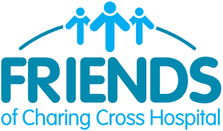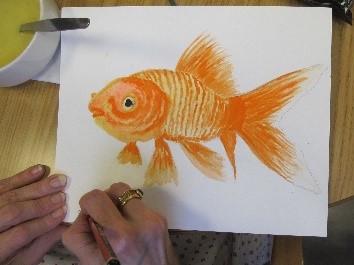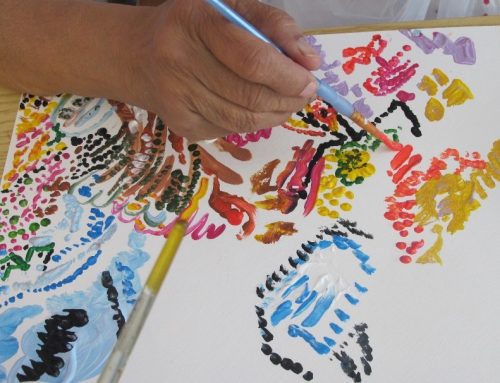Supported by the Friends of Charing Cross Hospital and led by Emelie Salford
Stroke is a particularly debilitating condition, both physically and psychologically, and the suddenness of the onset can cause severe psychological distress. Art Rehabilitation has been shown to improve the quality of life for stroke survivors.
In the acute setting Art Rehabilitation can have immediate functional and therapeutic benefits, working alongside stroke specialist therapists on specific functional tasks, it can aid recovery. Moreover, art as an outlet for psychological expression is likely to be extremely beneficial.
In early 2012 the Friends of Charing Cross agreed to fund a pilot scheme of Art Rehabilitation sessions for one day a week at the Imperial Stroke Unit. The Art Rehabilitation programme was created to provide patients with an opportunity to talk about art, to draw and to paint according to their preference and ability. The aim was to provide a therapeutic service in a supportive environment. The sessions began in March 2012 and the initiative was greeted with tremendous enthusiasm by the staff. I was excited to be a member of the team and looked forward to introducing an element of hope and creative outlet for many survivors of stroke.
The Art Rehabilitation programme comprises weekly one-to-one sessions with patients and art group meetings in the gym. They are organised in collaboration with the Speech Therapists, Occupational Therapists and Physiotherapists and are aimed to encourage interaction between patients through the universal language of art. Art Rehabilitation presentations are also held during Stroke Support Group meetings as well as at talks by stroke survivors themselves so as to create a dialogue around stroke and how art plays an important role in recovery. These presentations included An Afternoon with Artist and Stroke Survivor Roger Partridge: ‘Sculpture, cancer and stroke. A lifelong journey’ on the 9th December 2014. Roger commented:
“The arts rehabilitation programme at Charing Cross Hospital was instrumental in aiding my recovery. I saw how it helped other stroke patients and the real benefit it was bringing to them”
‘An Evening with Andrew Marr’ on 29th October 2013, following his stroke and treatment at the Imperial Stroke Unit, was attended by over 350 people.
The Art Rehabilitation programme was extended to a second location the following year at The Lady Skinner ward, a 15-bed rehabilitation ward on the ground floor at Charing Cross Hospital. The ethos behind this ward is in the assessment and intensive therapeutic support of older patients prior to discharge home or transfer to an external care facility such as a residential or nursing home. The ward has a strong therapies and nursing team supported by a consultant led medical team and the addition of Art Rehabilitation enhances recovery and stimulates the mental health of patients on the ward.
Art when expressed through colour, as many of the patients have communication difficulties such as hearing problems or dementia, will offer an alternative channel for expression and communication. The Art Rehabilitation programme was introduced with the aim to reduce stress, boost self-esteem, increase self-awareness and encourage a positive outlook on life whilst aiding mobility, coordination, identification and interpretation.
Art Rehabilitation on the Lady Skinner Ward is based around weekly one-to-one sessions with patients as well as workshops in the dayroom. An ongoing exhibition of patients’ artworks is on display in the dayroom in addition to occasional film screenings.
Brian Desmond, a patient on the ward after suffering a stroke in 2014, was inspired to take up art again having been encouraged by the Art Rehabilitation programme. His subsequent exhibition ‘An Exhibition of drawings by patient and cartoonist Brian Desmond’, supported by The Friends of Charing Cross, was reported by W4, Chiswick’s local magazine.
Check out all the art work here:


